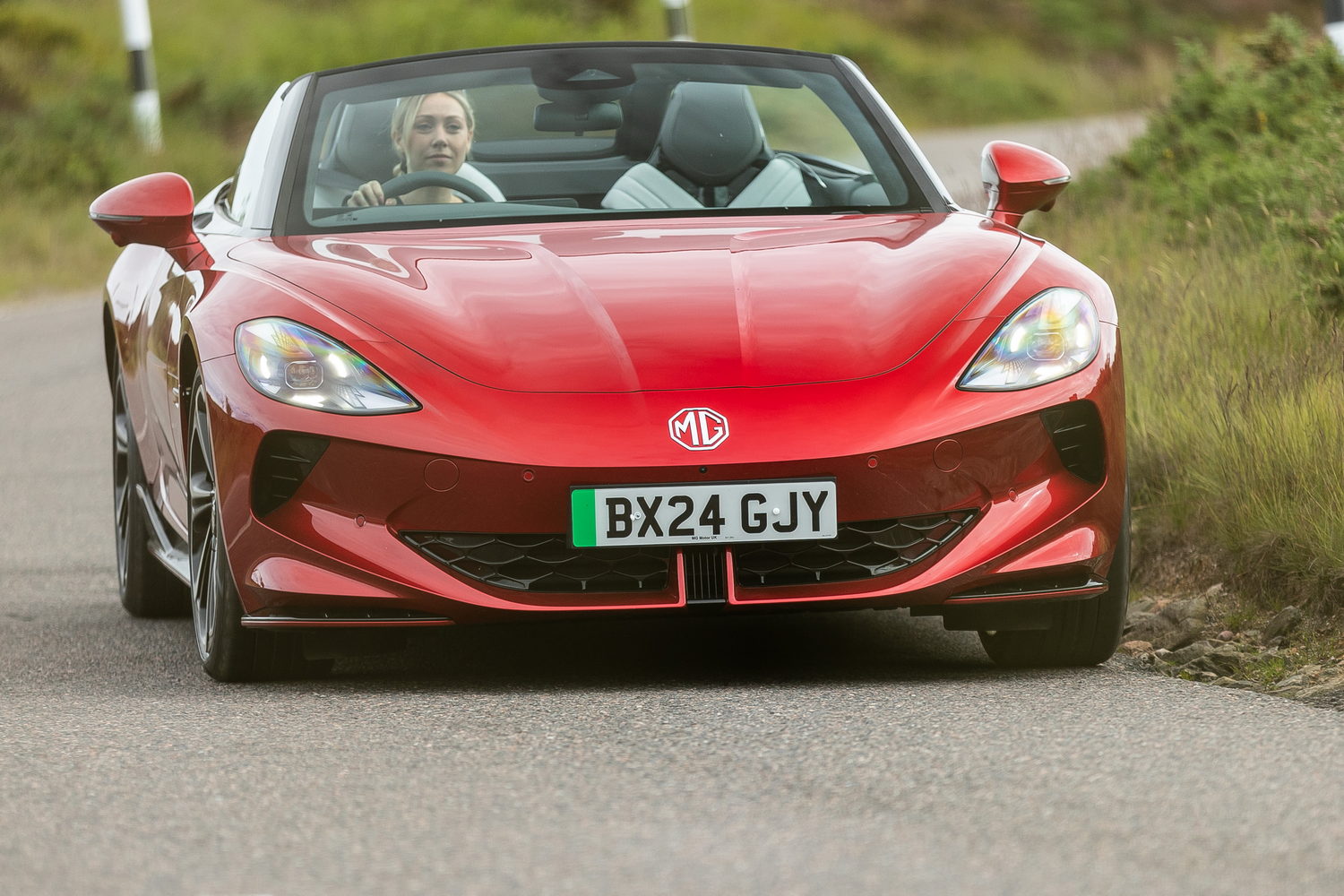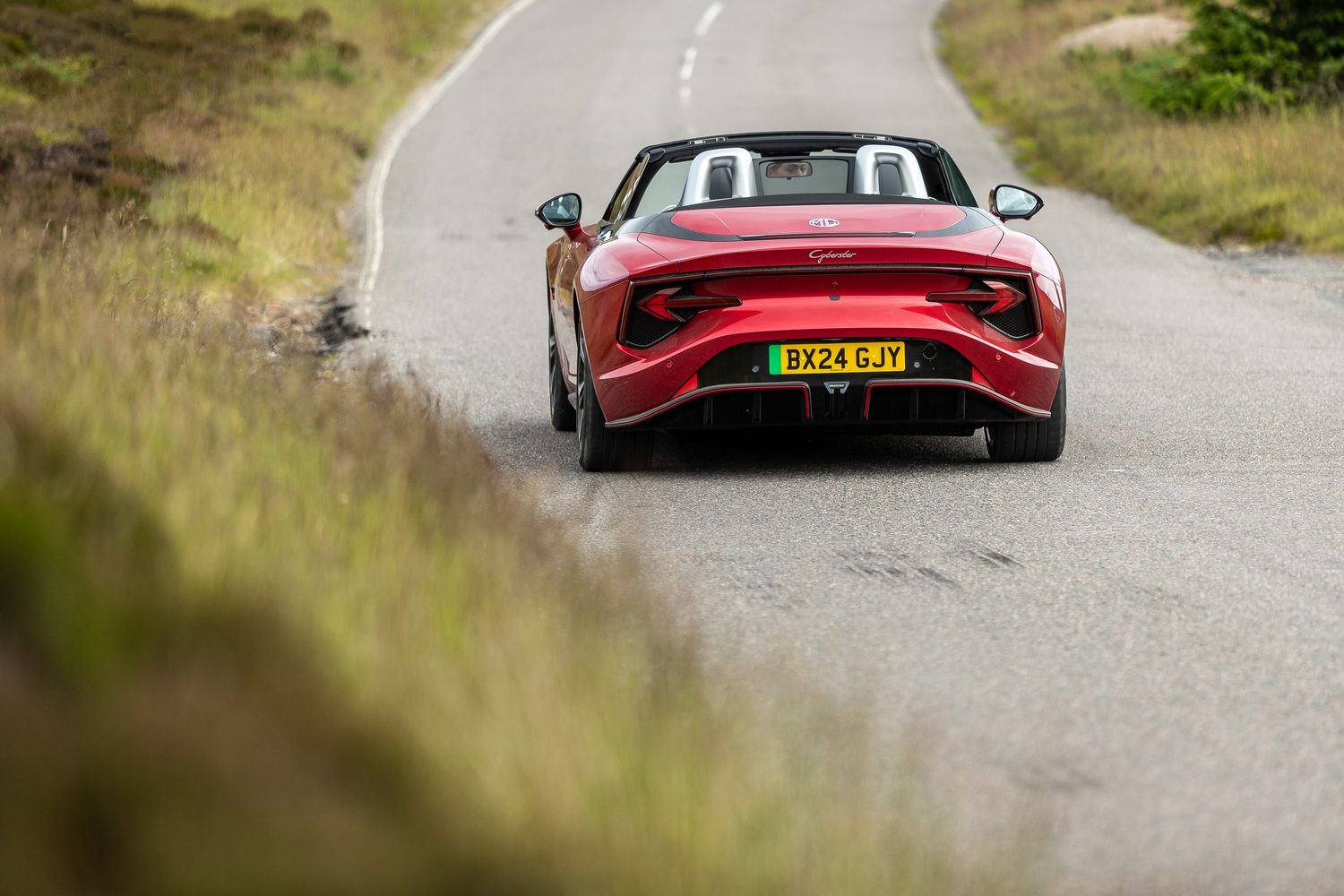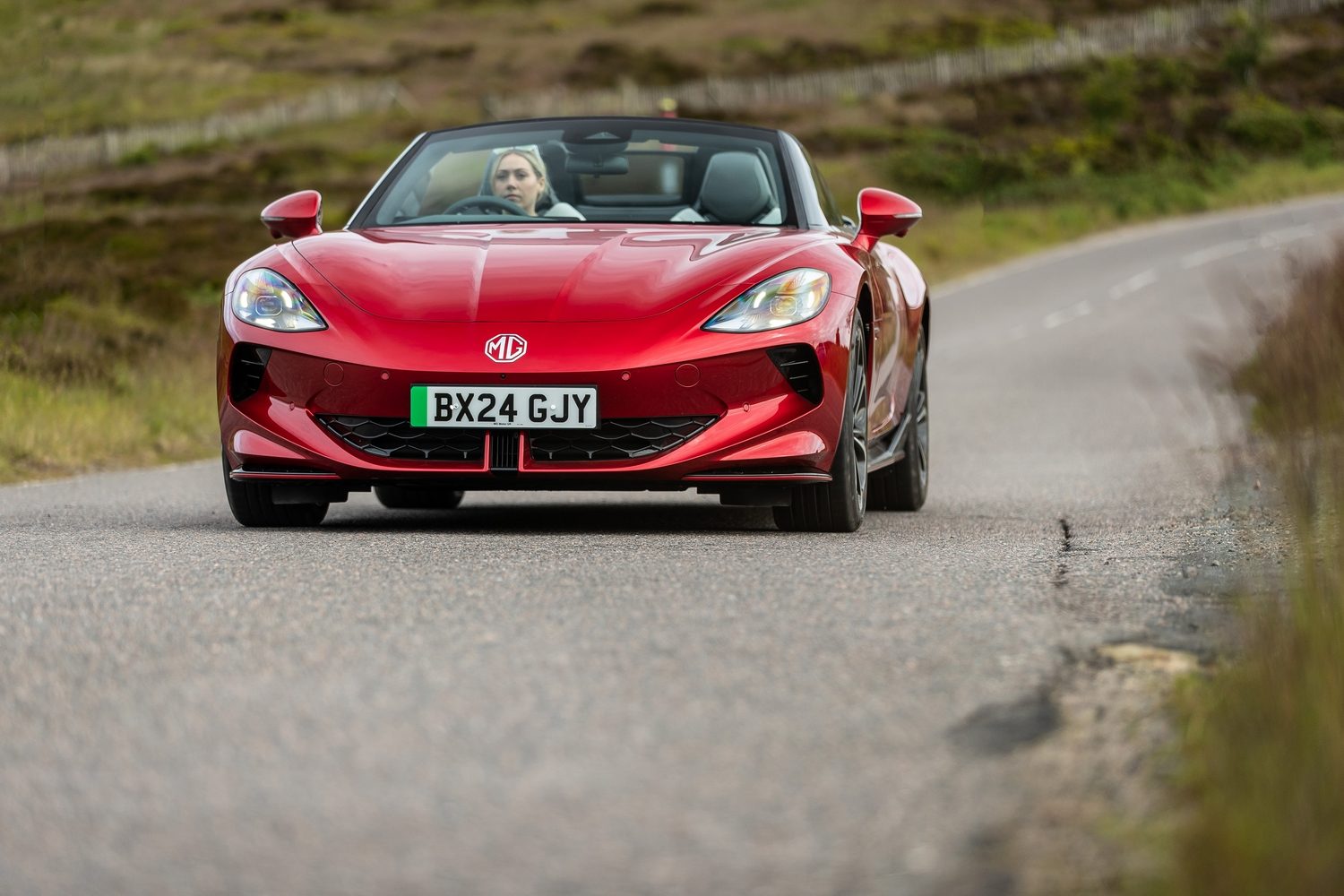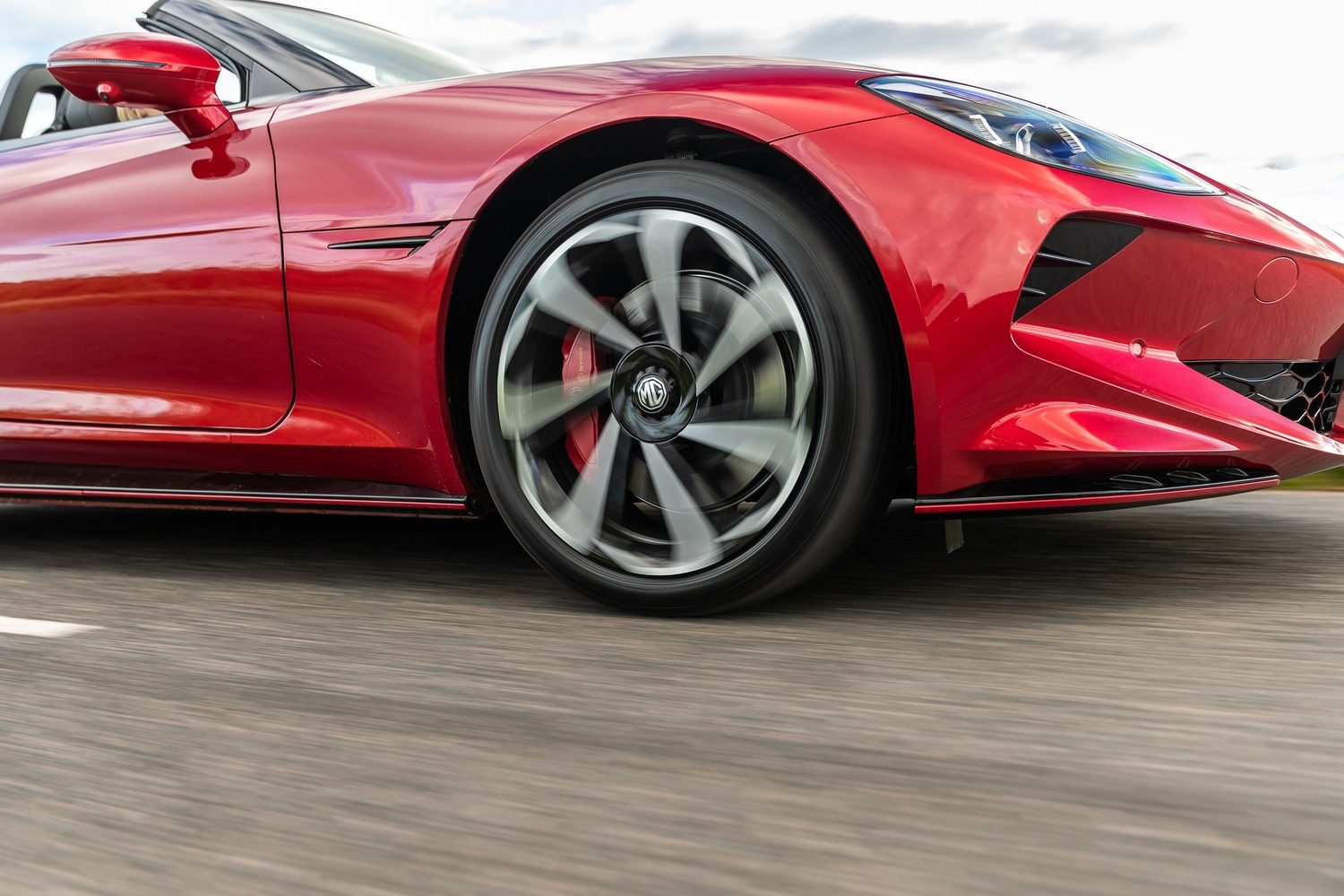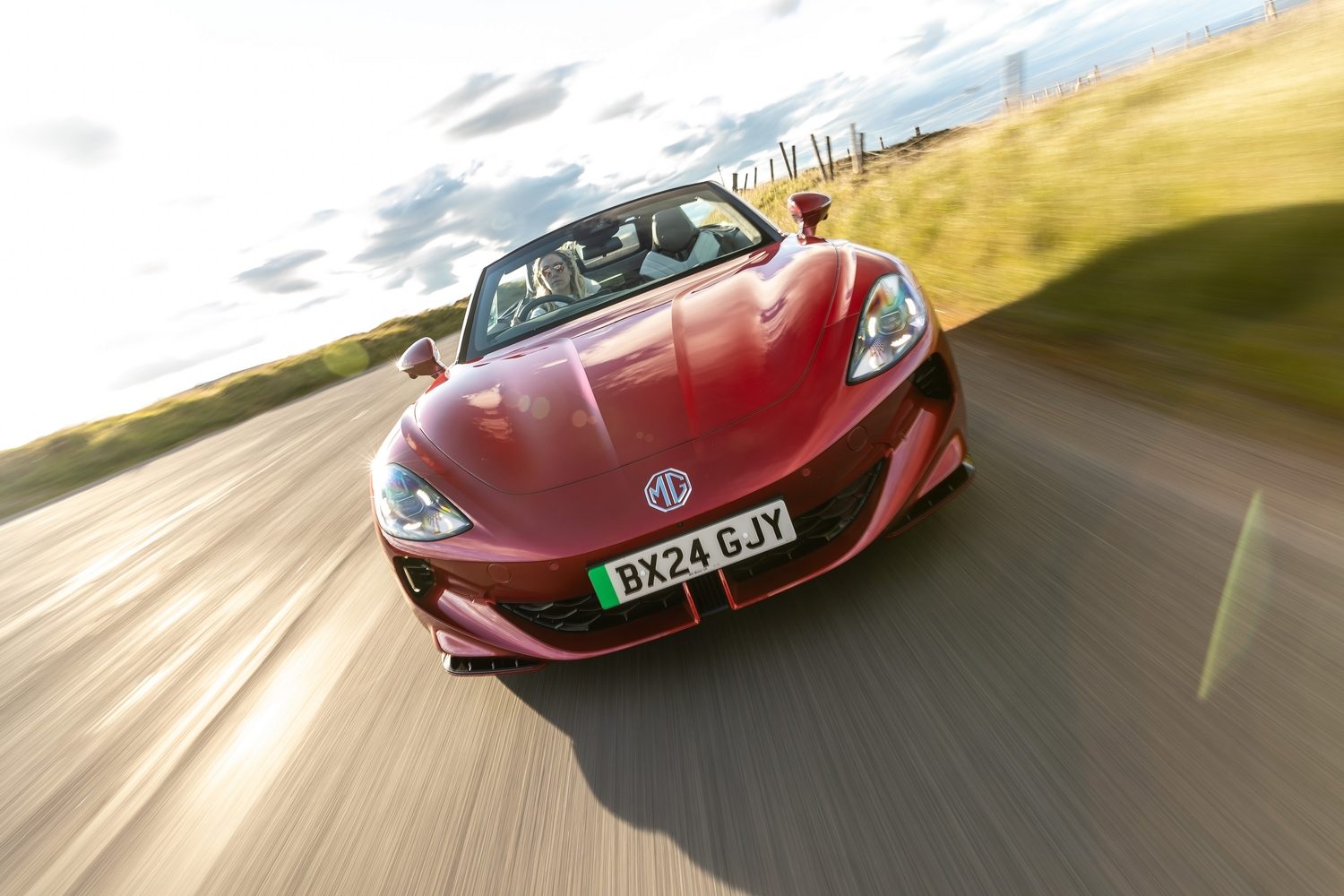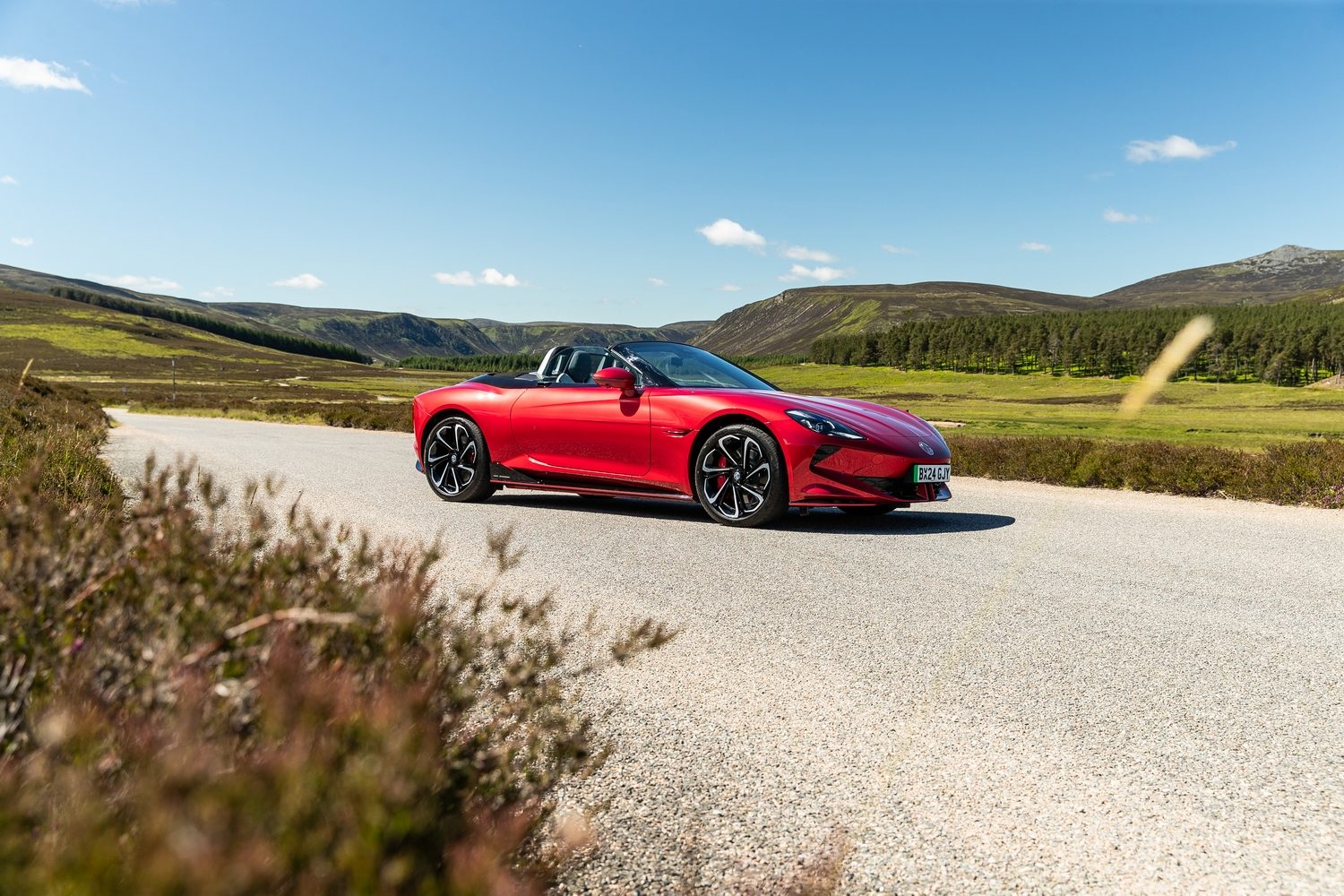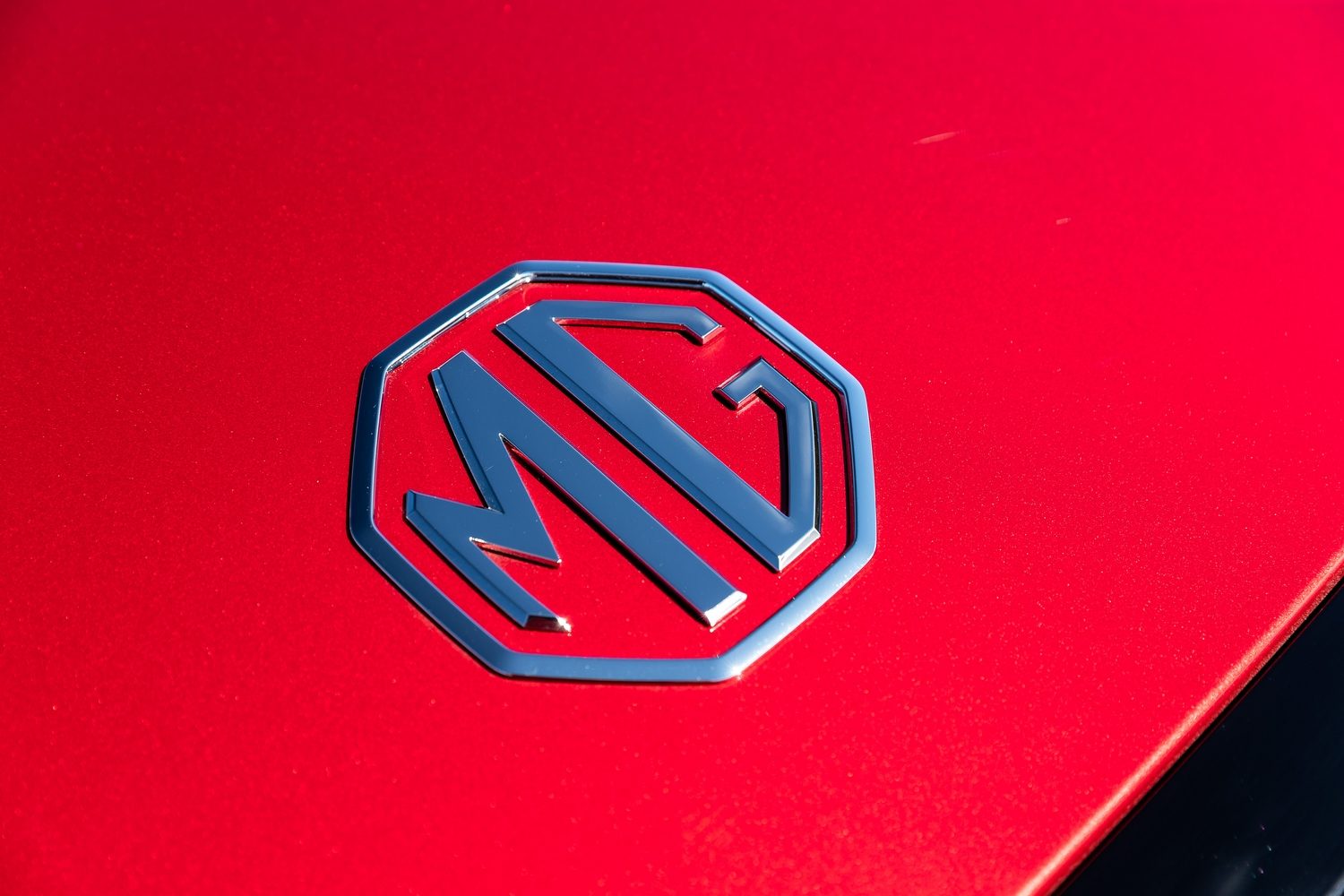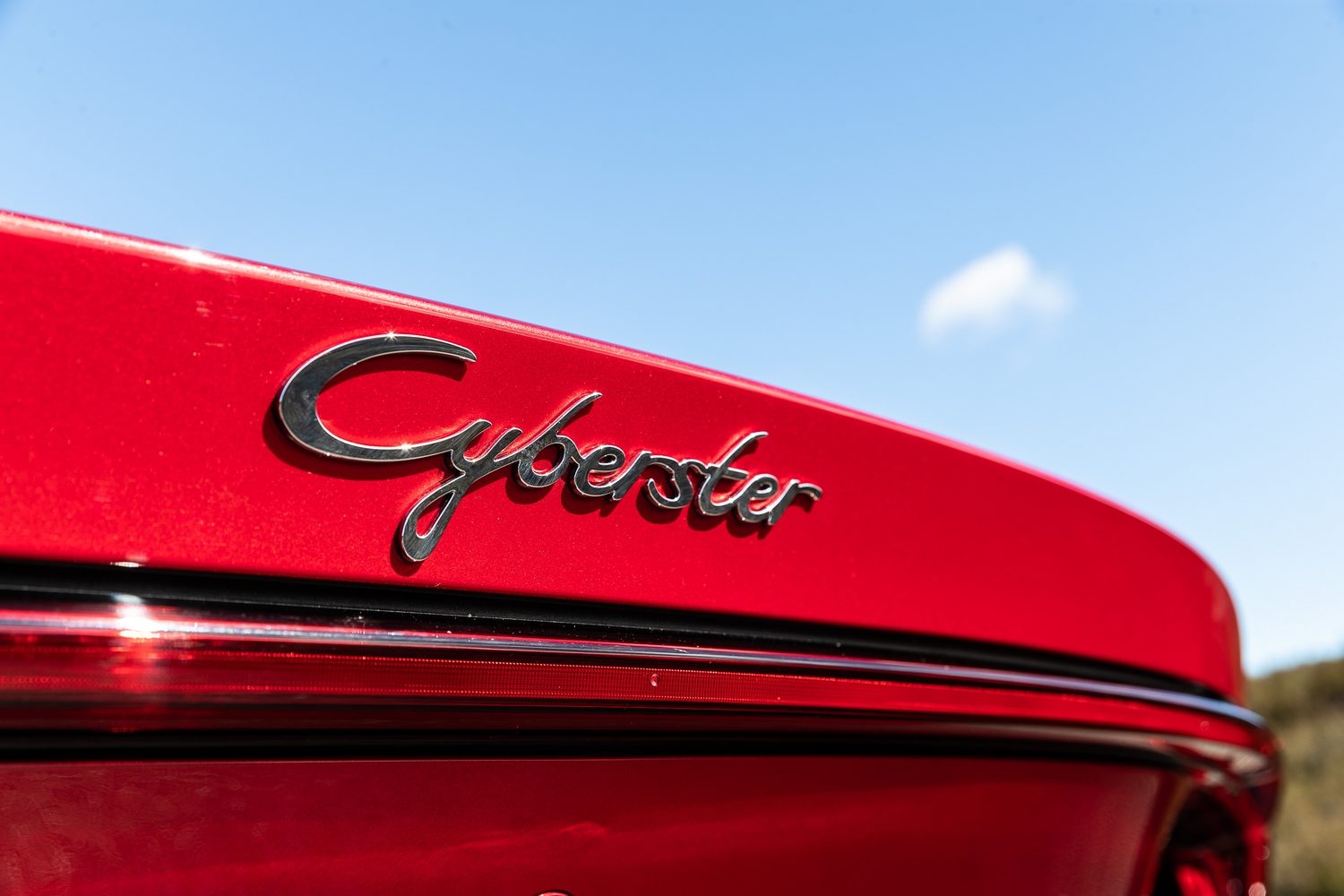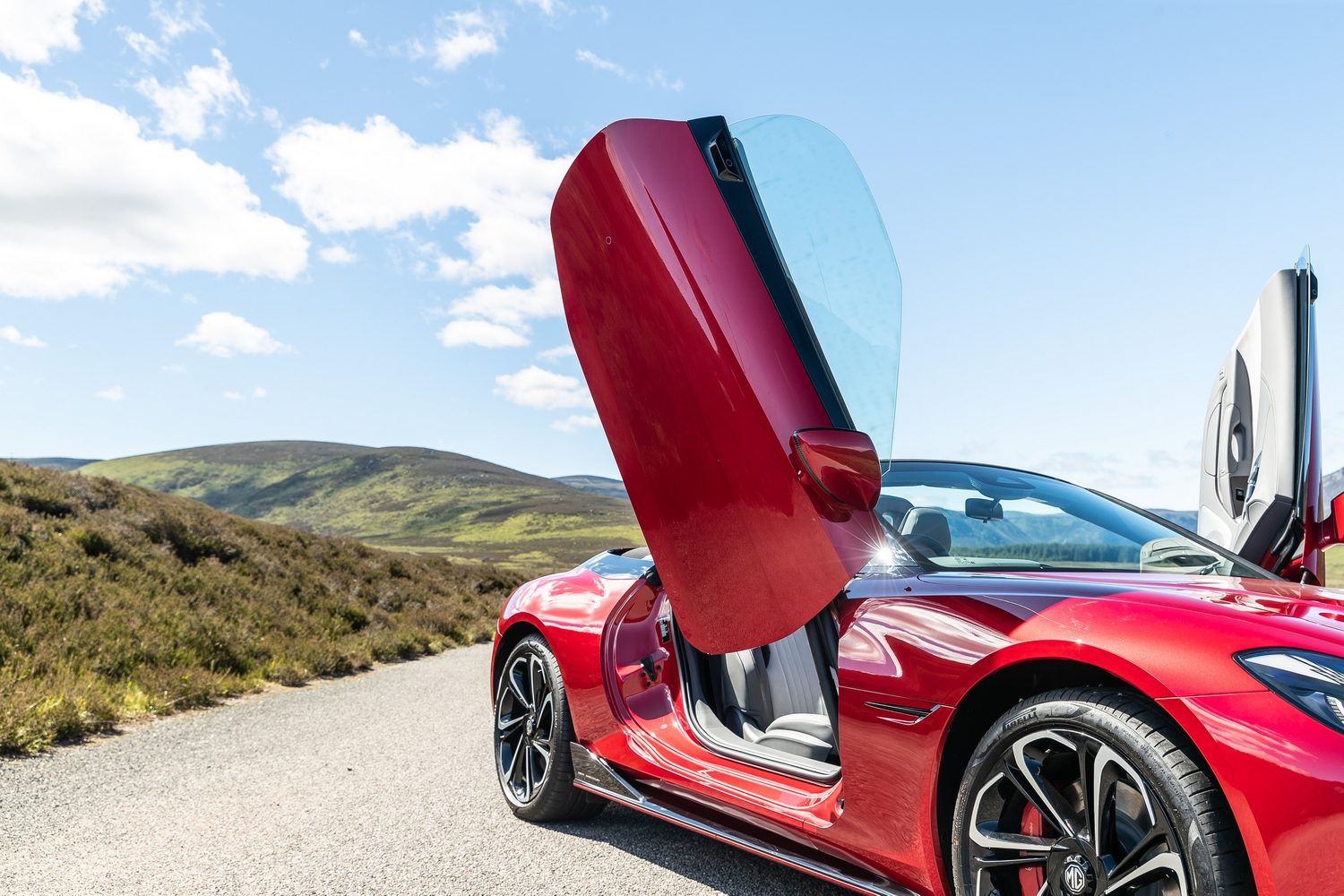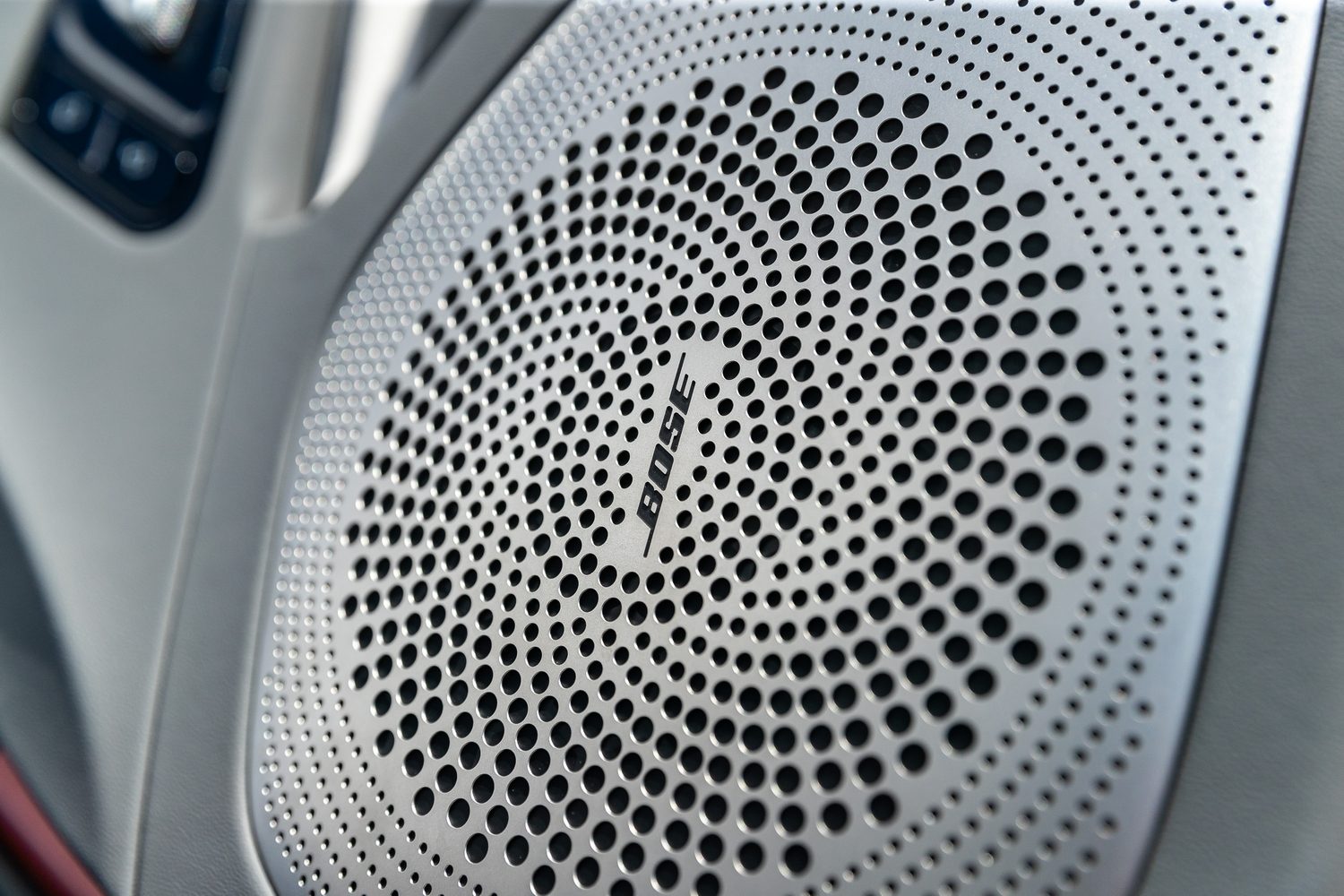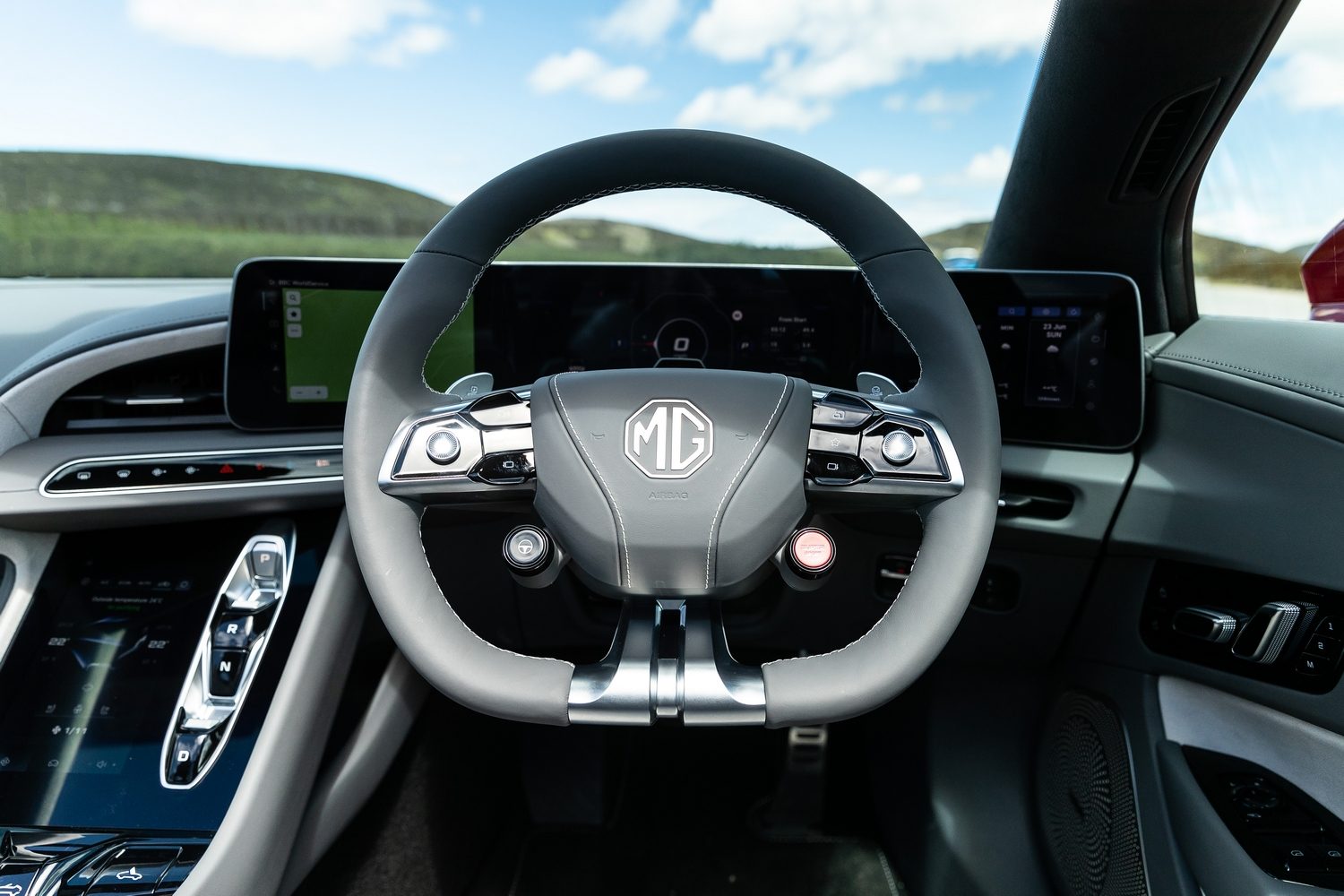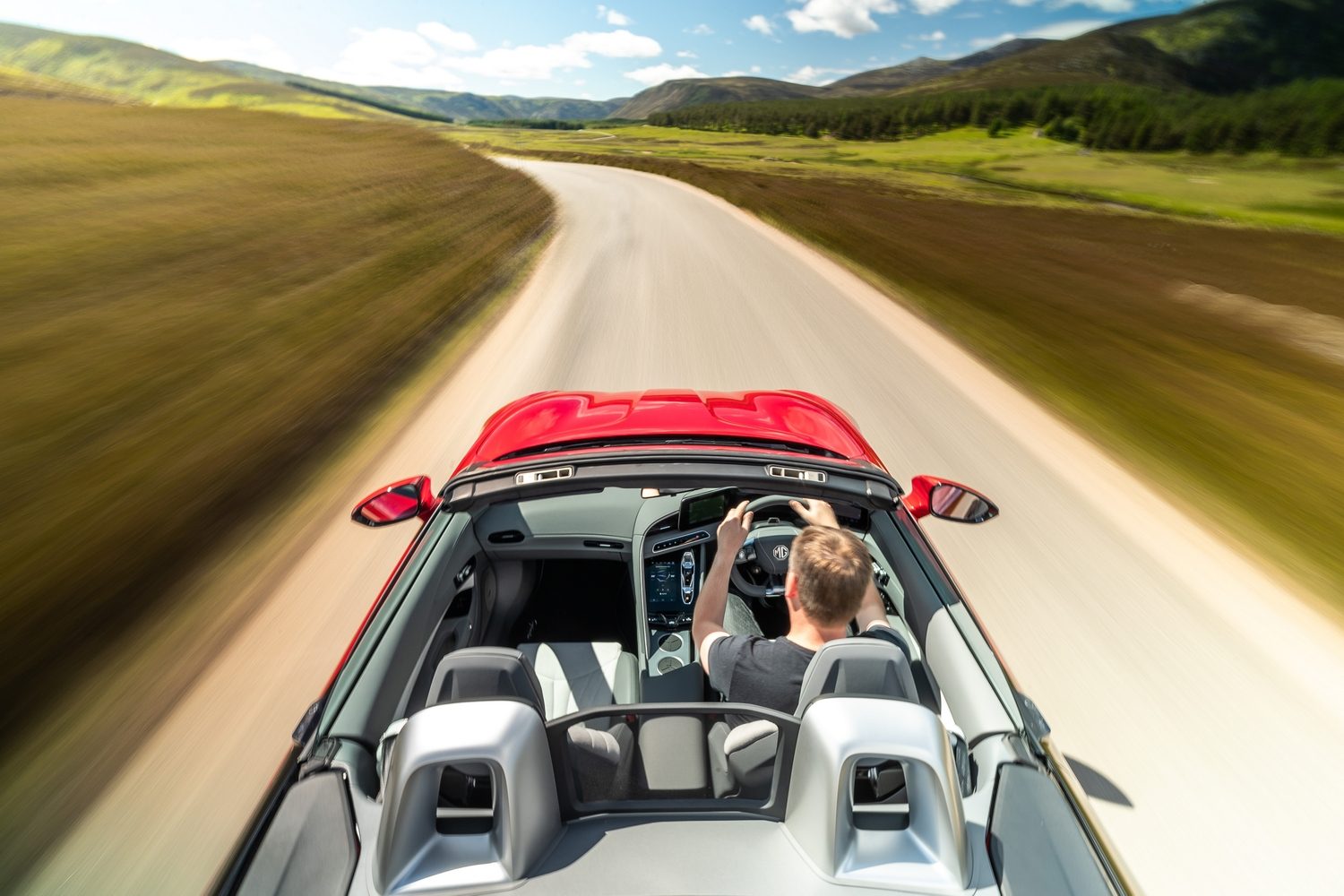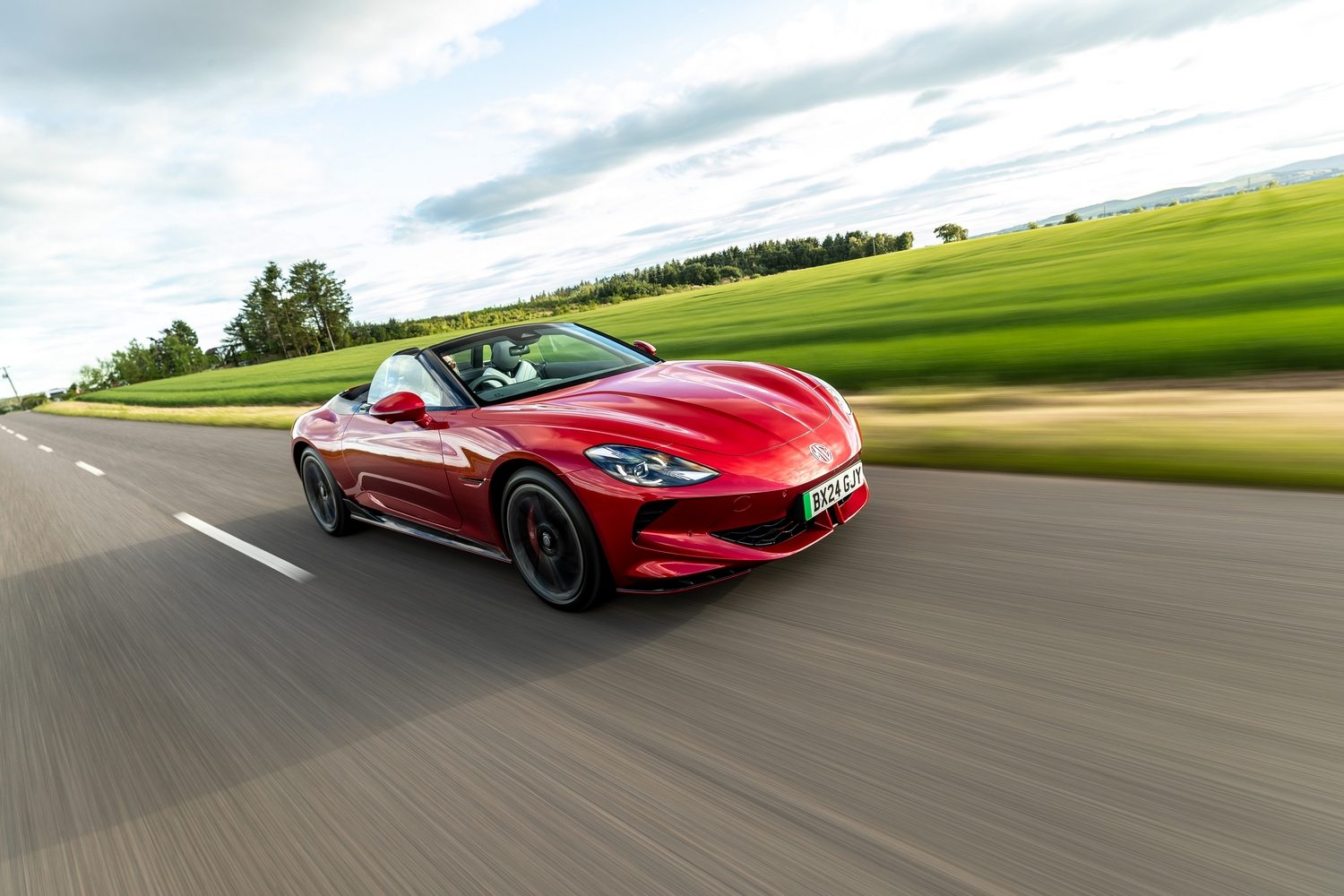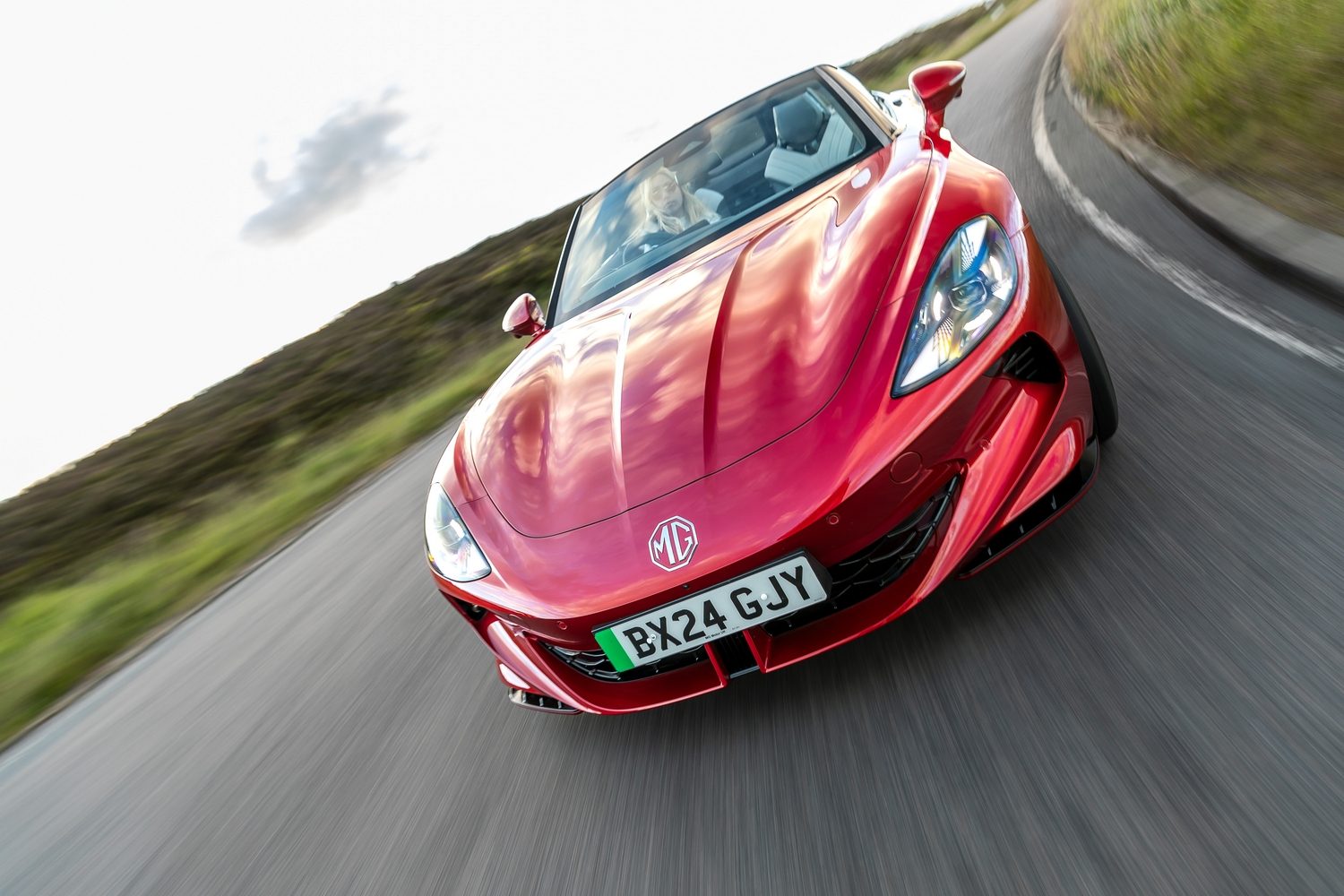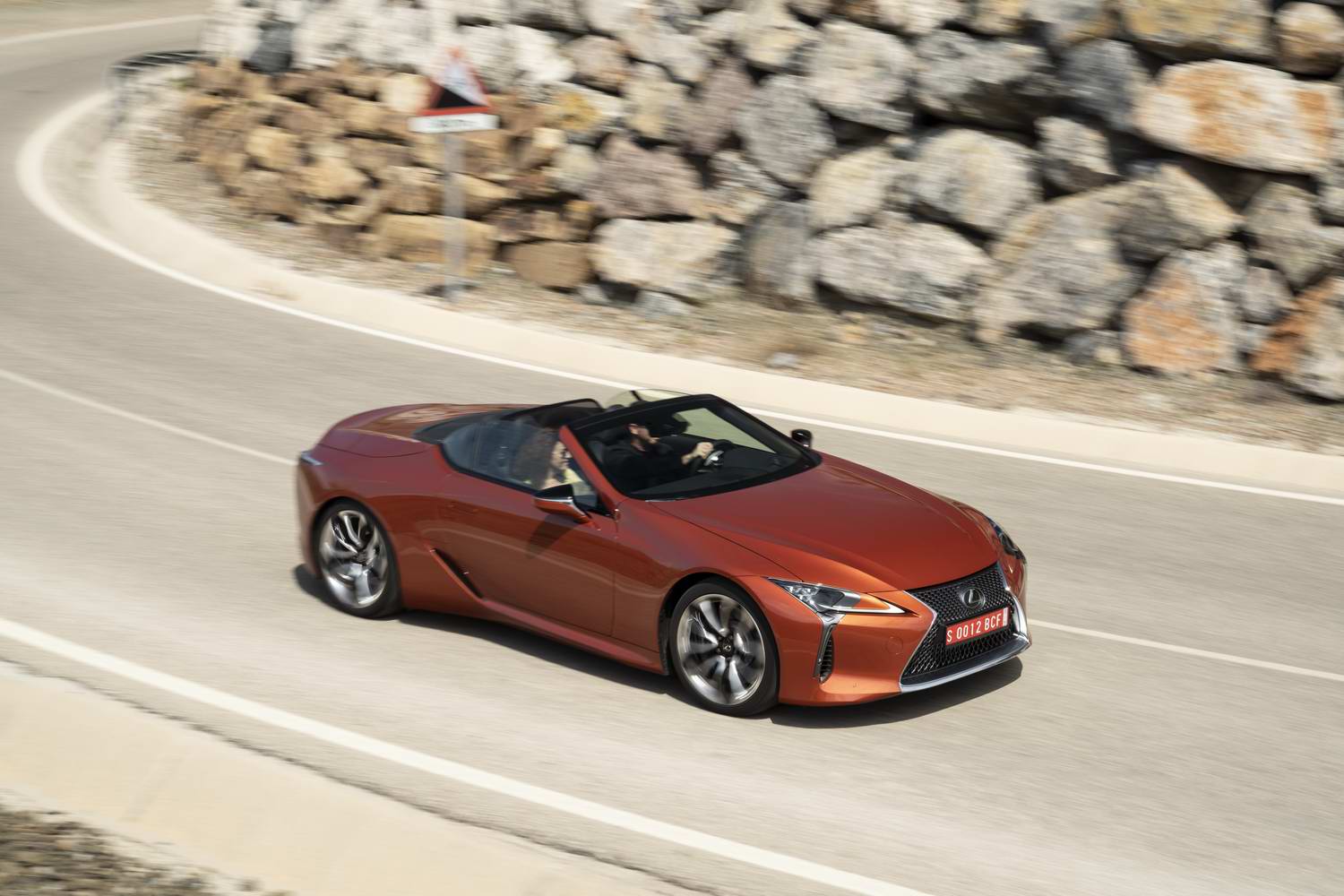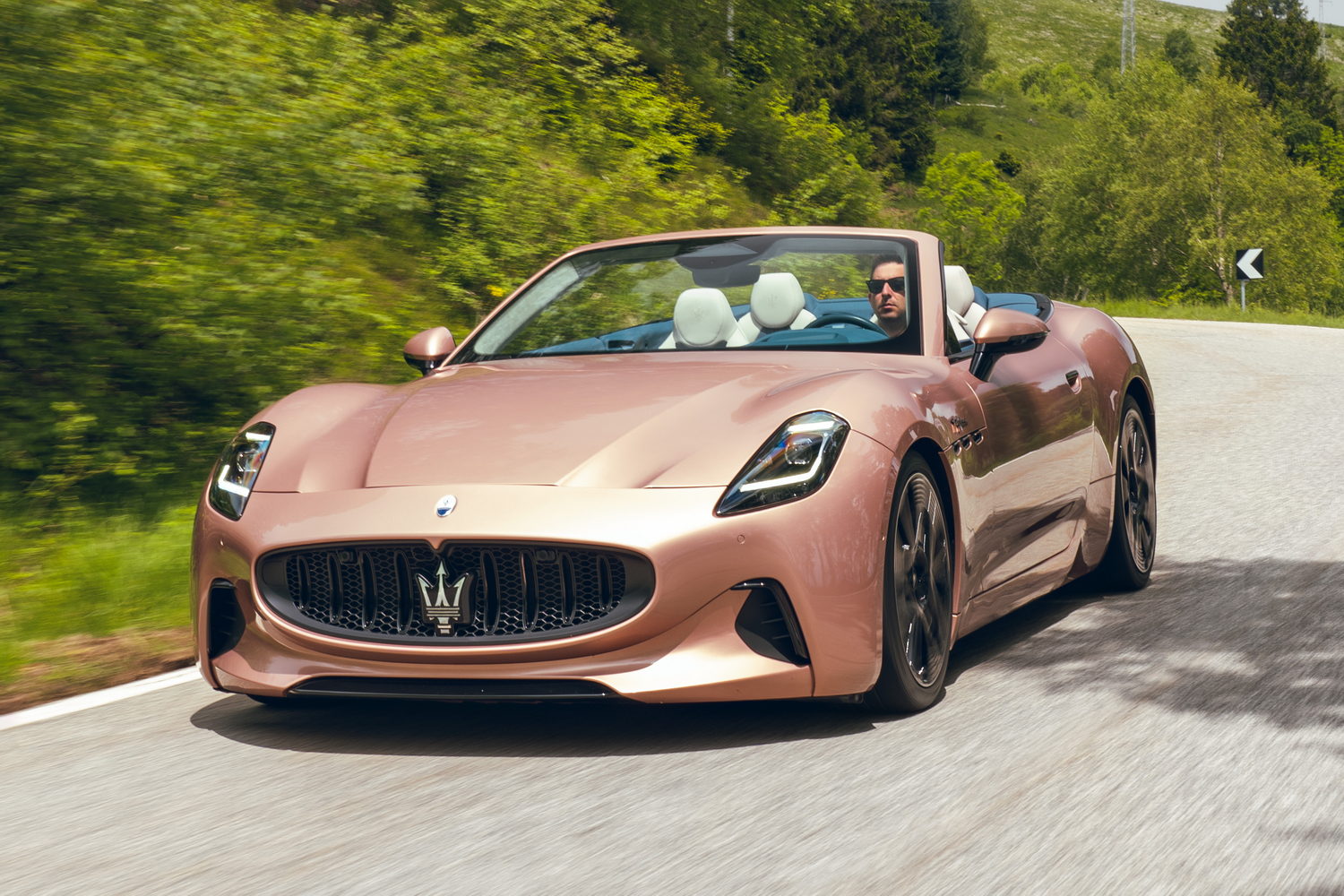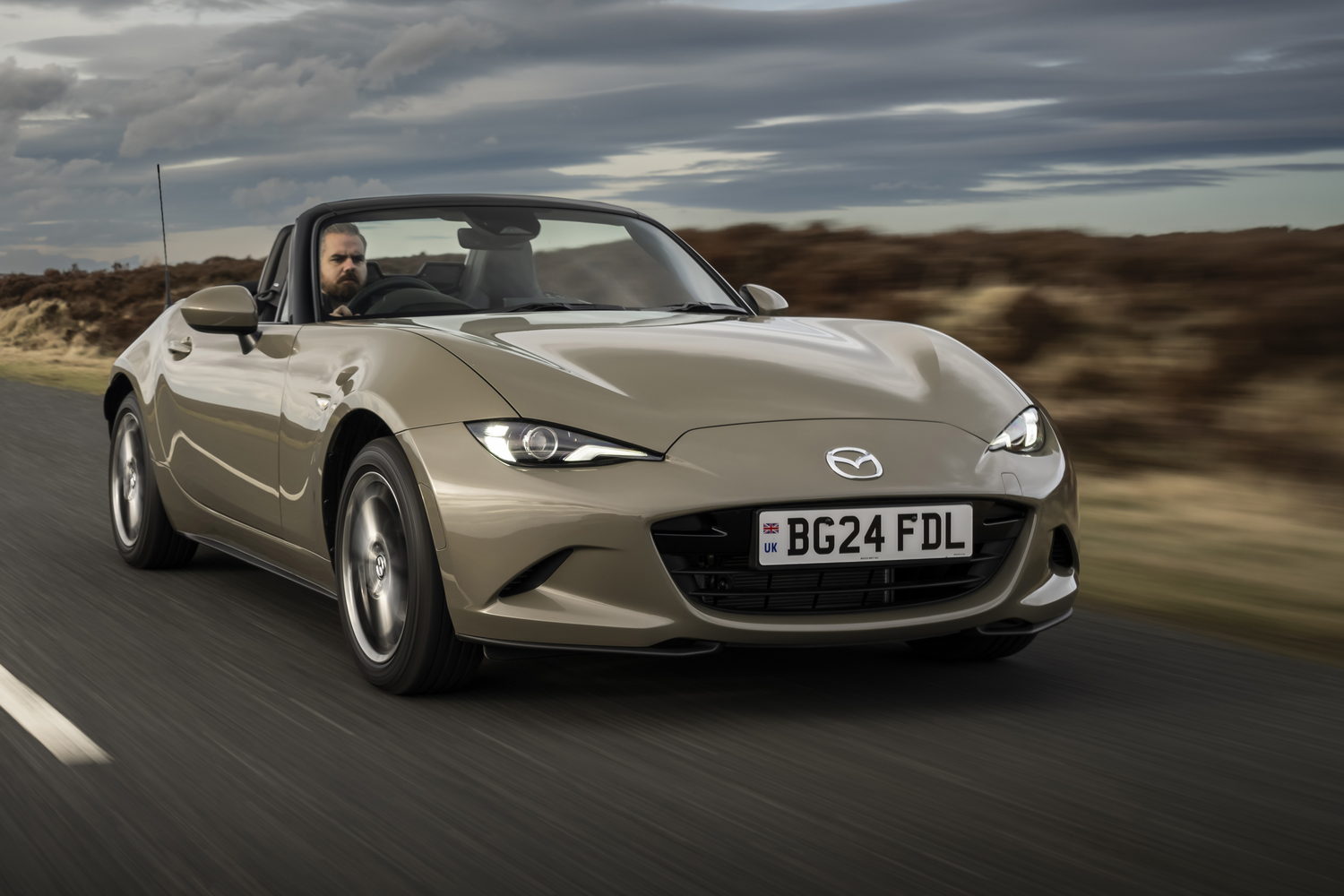When Irish people think of MG cars, most probably remember the classic MG B roadster. These days the rebooted brand’s identity is all about more practical crossovers and hatchbacks, but the arrival of the new Cyberster opens a link to the company’s sports car past.
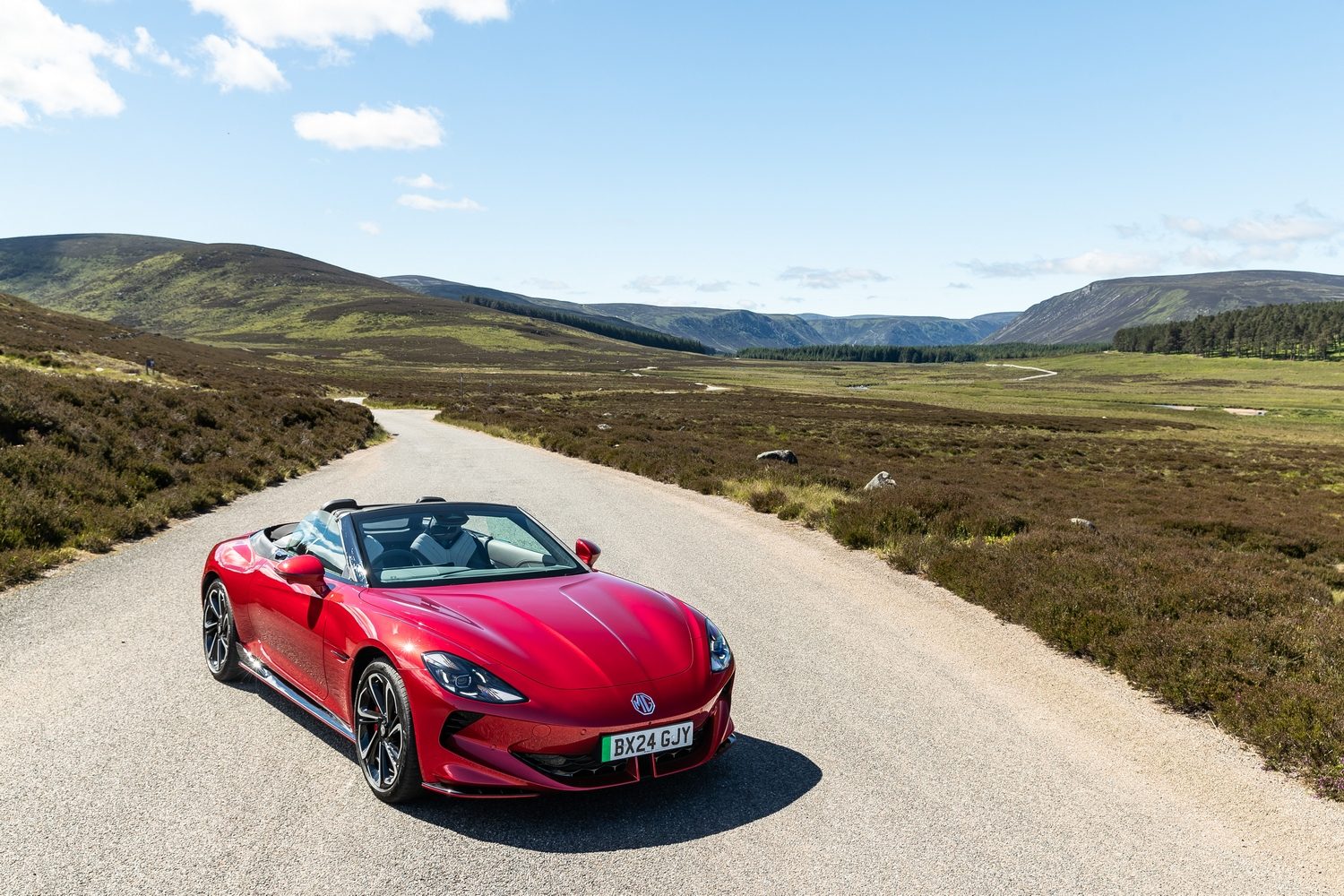
However, the MG Cyberster is no homage; instead, it’s a forward-looking drop-top that also happens to be battery powered. It comes in two flavours, including a range-topping 510hp dual-motor version. Here we’re testing the single-motor Cyberster Trophy over some of northern Scotland’s best roads.
How big is the MG Cyberster?
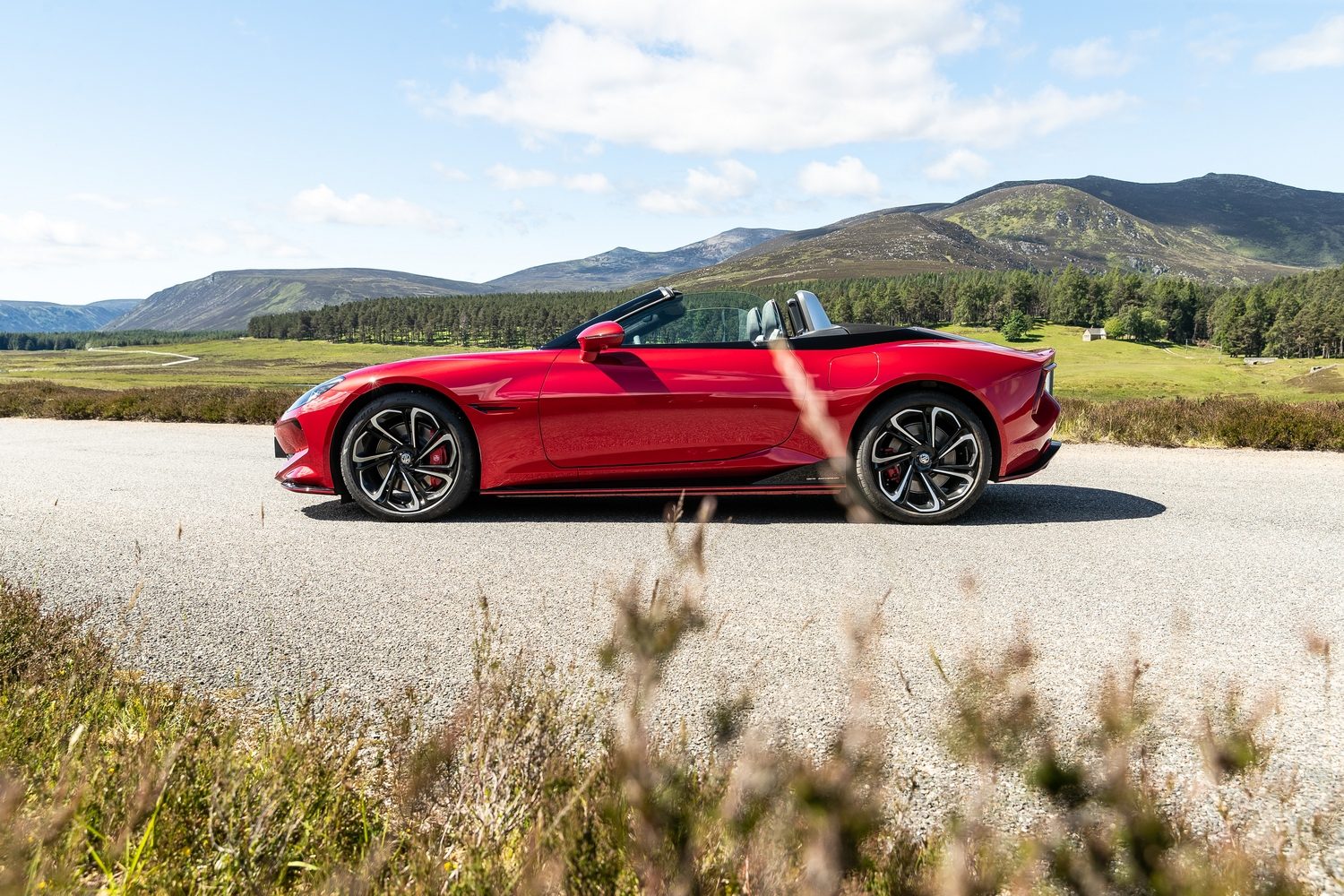
At 4,535mm in length, the MG Cyberster is larger than you might expect for a two-seat convertible sports car. The current generation Mazda MX-5, for reference, is 3,915mm long while the BMW Z4 is 4,324mm. The Cyberster is also 1,913mm wide (or 2,110mm if you include the door mirrors), which again makes it wider than many similar cars. While it’s a far cry from the original MG Midget, the Cyberster’s proportions suit it well and other than the unusual arrow-shaped indicators at the rear, there’s little divisive about the overall design. With a capacity of 249 litres, the boot isn’t massive or deep, but it is reasonably long and, MG says, is enough for a set of golf clubs. It’ll comfortably swallow up some soft luggage bags, too, though it’s surprising that, despite a substantial front bonnet, there is no storage under there in the form of a ‘frunk’.
A look inside the MG Cyberster
There’s a less than conventional method to gain access to the Cyberster’s cabin, which you first notice by the lack of any exterior door handles. Look a little more closely within the glossy black band that surrounds the tops of the doors (linking the windscreen pillars and the rear deck behind the silver roll hoops) and you’ll discover a small, raised section with a haptic button. Press that, or use the corresponding button on the key fob, and the doors electrically rise upwards. It’s all a bit theatrical and it’s not like the car needs any extra help in the attention-grabbing department, but MG has ran with it.
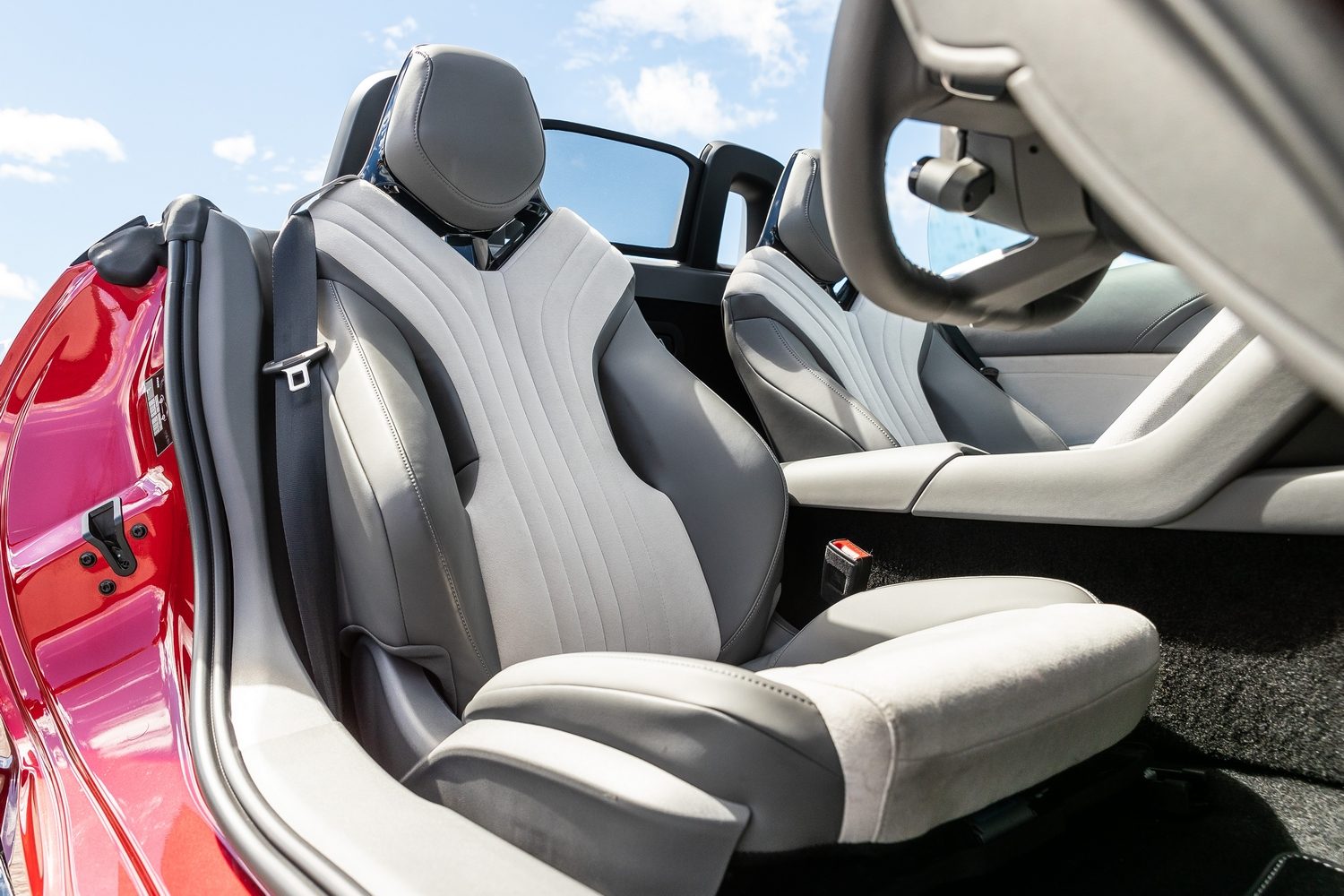
Incidentally, the doors have several sensors on them (using the same tech as the parking sensors at either end of the car) to detect any potential risk of colliding with any objects or people when opening and closing. An advantage of the elaborate door mechanism is that it makes ingress and egress quite easy even when parked next to other vehicles.
One of the first things you’ll notice is that the seats are more comfortable than you might expect, further underlining the Cyberster as more of a GT car than outright sports car. Material quality is good and there’s a driver-centric layout. The grab handle on the centre console adds to that but without making the passenger feel cut off from the action. It’s a modern look full of digital displays which we’ll go into in more detail in the onboard technology section below. The important thing is that neither driver nor passenger are likely to feel cramped inside the Cyberster. It’s cosy in a good way and not particularly low-slung.
Driving the MG Cyberster
If you’re expecting a driving experience that includes the words nimble and lithe then the Cyberster might disappoint. It’s a mistake to attempt to put this in the same box as something like a Mazda MX-5. Tipping the scales at 1,885kg it’s not exactly light, mainly due to its substantial 74.4kWh battery that provides a combined range of 507 kilometres from a charge. That figure further underlines the Cyberster’s ability as a proper GT car, even if luggage options are a bit limited. You can always travel light.
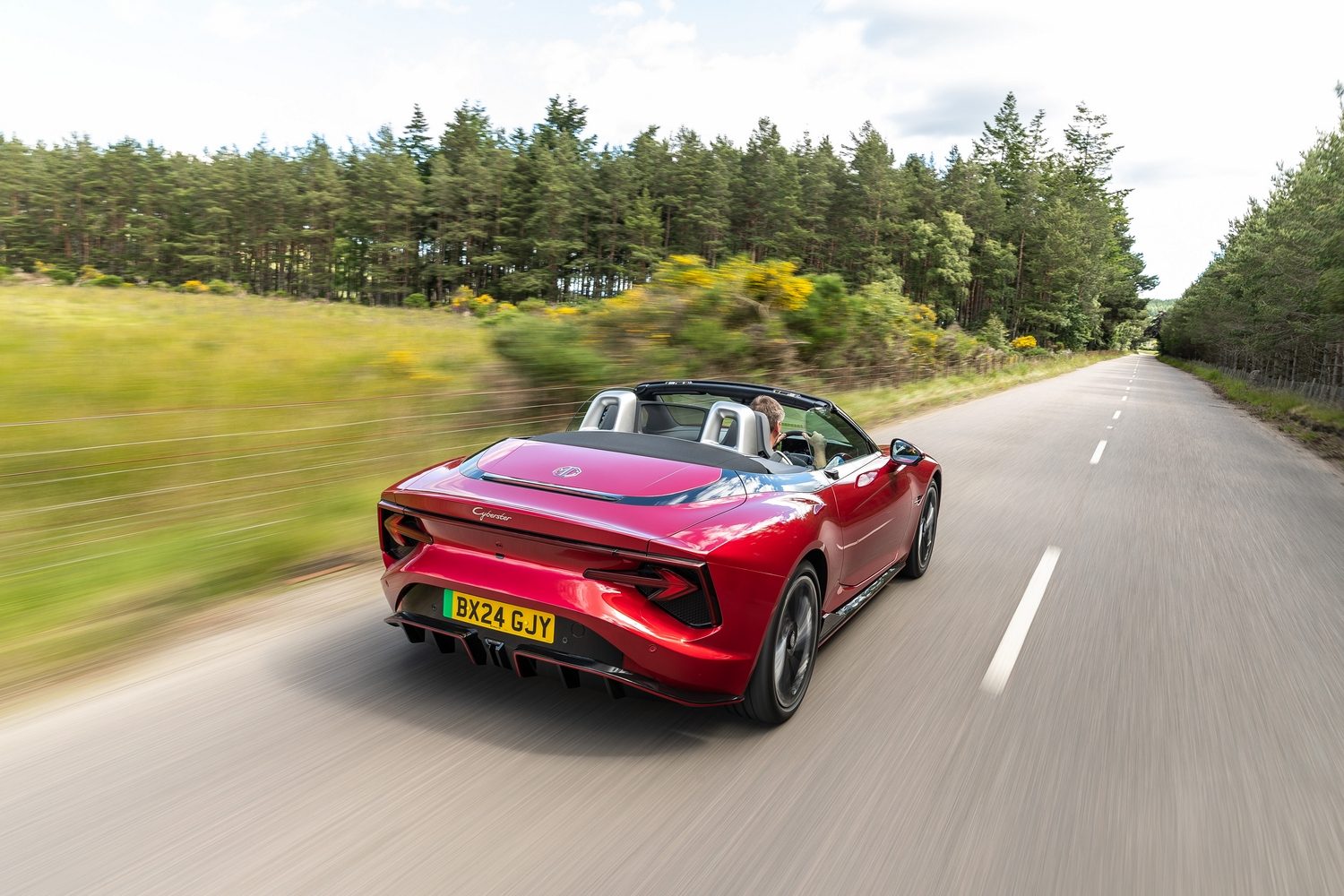
The single-motor Trophy version tested here still packs a fair punch in the performance stakes, with 340hp going to the rear wheels. Dialling in the launch mode is a bit of a faff but it’s what’s needed if you want to experience the five-second sprint from 0-100km/h. It feels faster than the stopwatch would indicate and it’s in that straight-line acceleration where the MG feels most potent, but when you start to throw some bends at it the weight rears its head and subtly reminds you that it’s perhaps best to ease back into a GT style of driving than chasing outright performance and pace.
Do so and you’re rewarded with a car that’s enjoyable and easy to drive. Across the undulating roads of our test route the Cyberster remained composed and felt solid and well-made. The angular steering wheel isn’t the prettiest of things to look at, but it feels okay in your hands, though drive with anything close to a “10 and 2” grip and you’ll find each of the dashboard’s outer display screens obscured by your hands. This is especially annoying if you’re reliant on the map information on the left screen. Nevertheless, there’s a nice weighting to the steering, and you can alter this through the menu system. The driver can also adjust the strength of the energy recuperation.
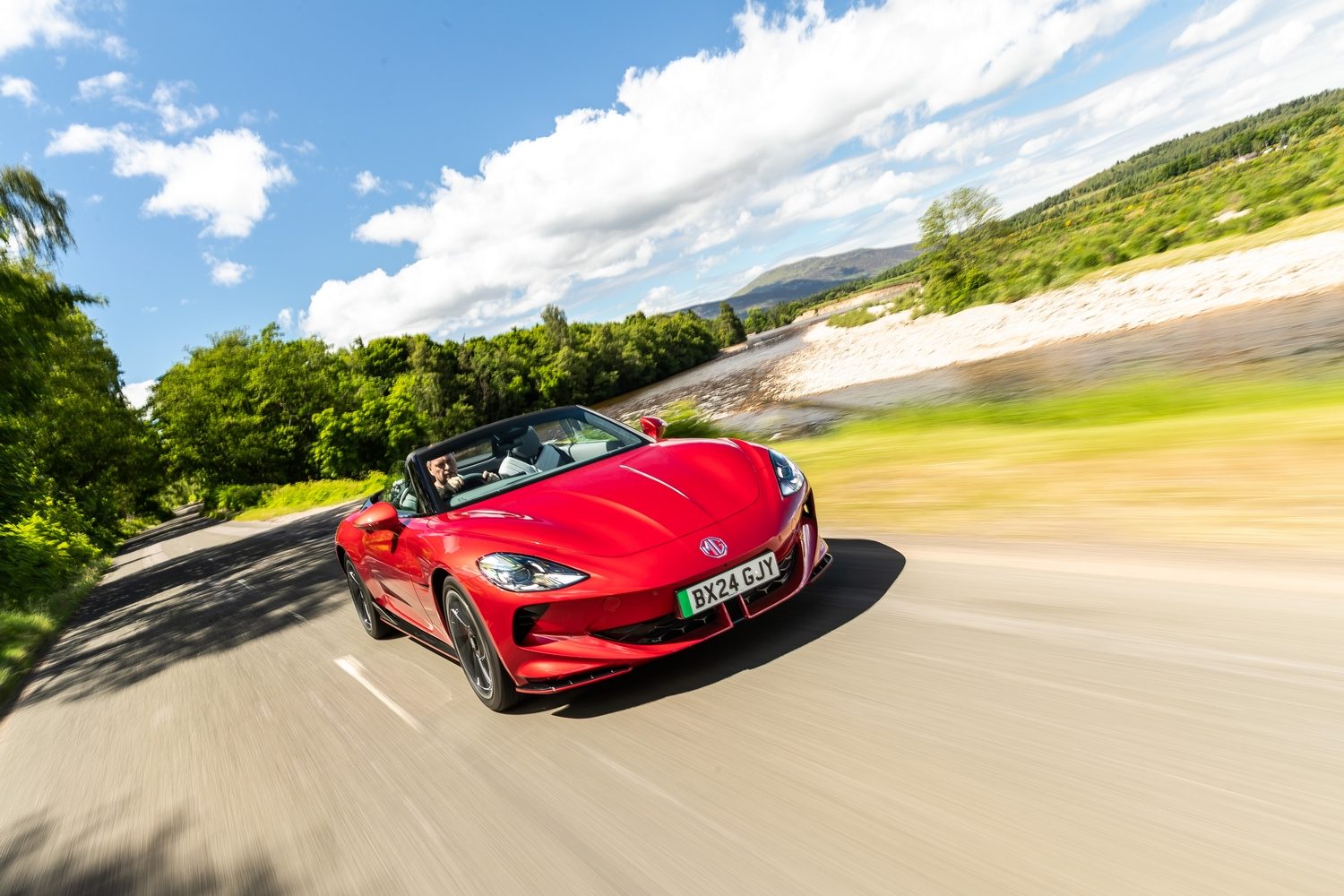
That aside the Cyberster feels enjoyable to drive, which is really the most important thing. Being electric means there is always a large chunk of torque readily available the moment you press a bit harder on the accelerator pedal. You don’t need to work it hard to extract that performance, but equally it settles into a sedate pace with ease when you simply want to get from A to B. With the roof up, the outside world is blocked out to an extent, though it’s not as quiet an experience as you’d find in a fixed-roof coupe.
Furthermore, without a noisy engine at work, you tend to hear other noises and sounds that aren’t so desirable, such as road noise and in our experience a few rattles and shakes as the car travels over rough surfaces. These would probably be less perceptible if there was an engine at work. Still, when the roof is down you don’t experience a great deal of wind buffeting. A small mesh panel between the roll hoops behind your head does a thorough job of adding additional protection from the wind even at higher speeds.
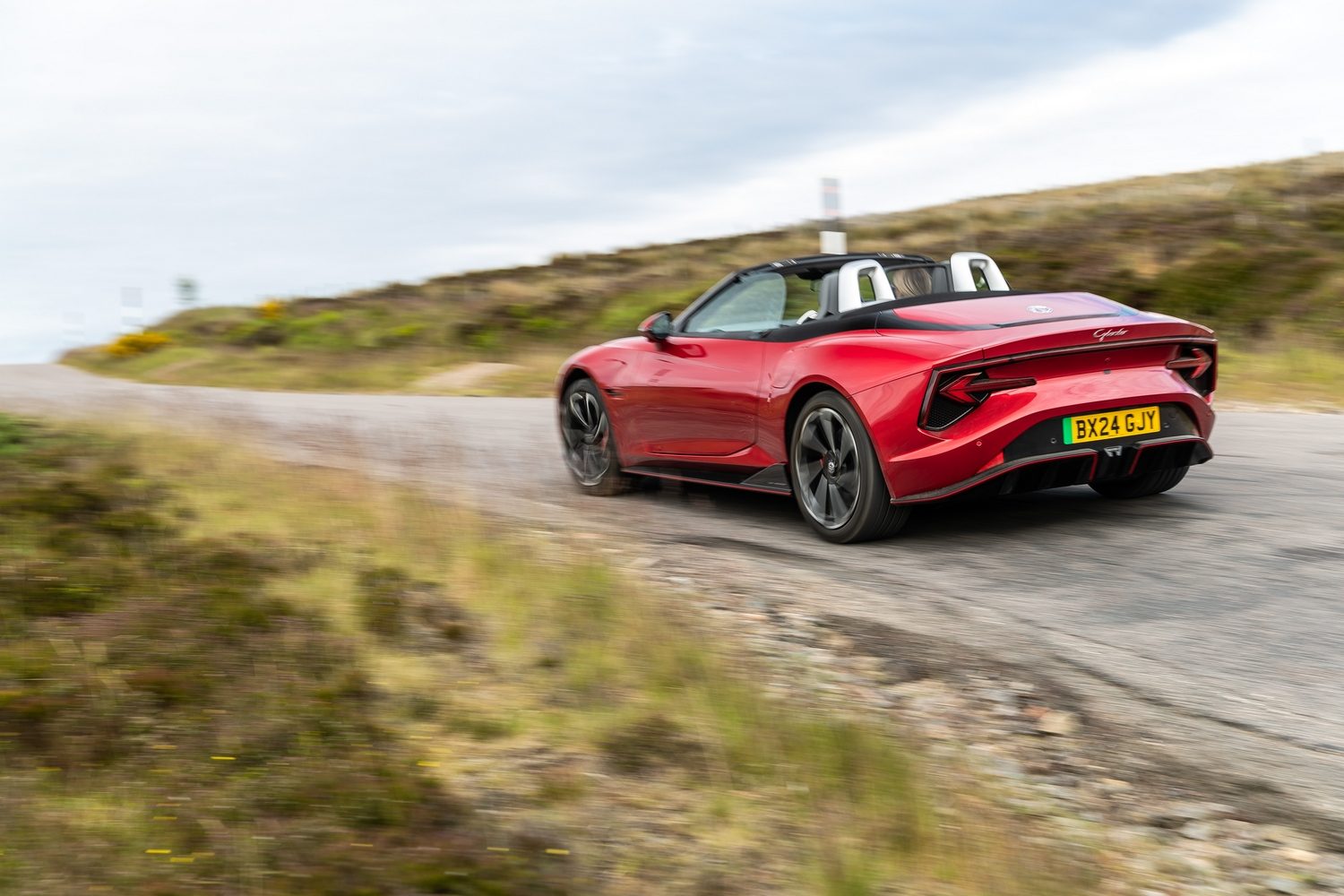
How much is the MG Cyberster in Ireland?
Late in 2024 MG Ireland confirmed that the entry-level Cyberster tested here, called the Cyberster Trophy and powered by a single, rear-mounted electric motor, will cost €69,900. The only other option is the dual-motor, all-wheel-drive Cyberster GT at €75,500. MG has packed them both with the same extensive list of equipment so the only way to tell them apart is that the GT gets larger alloy wheels - 20-inch in diameter vs. the Trophy’s 19-inch rims.
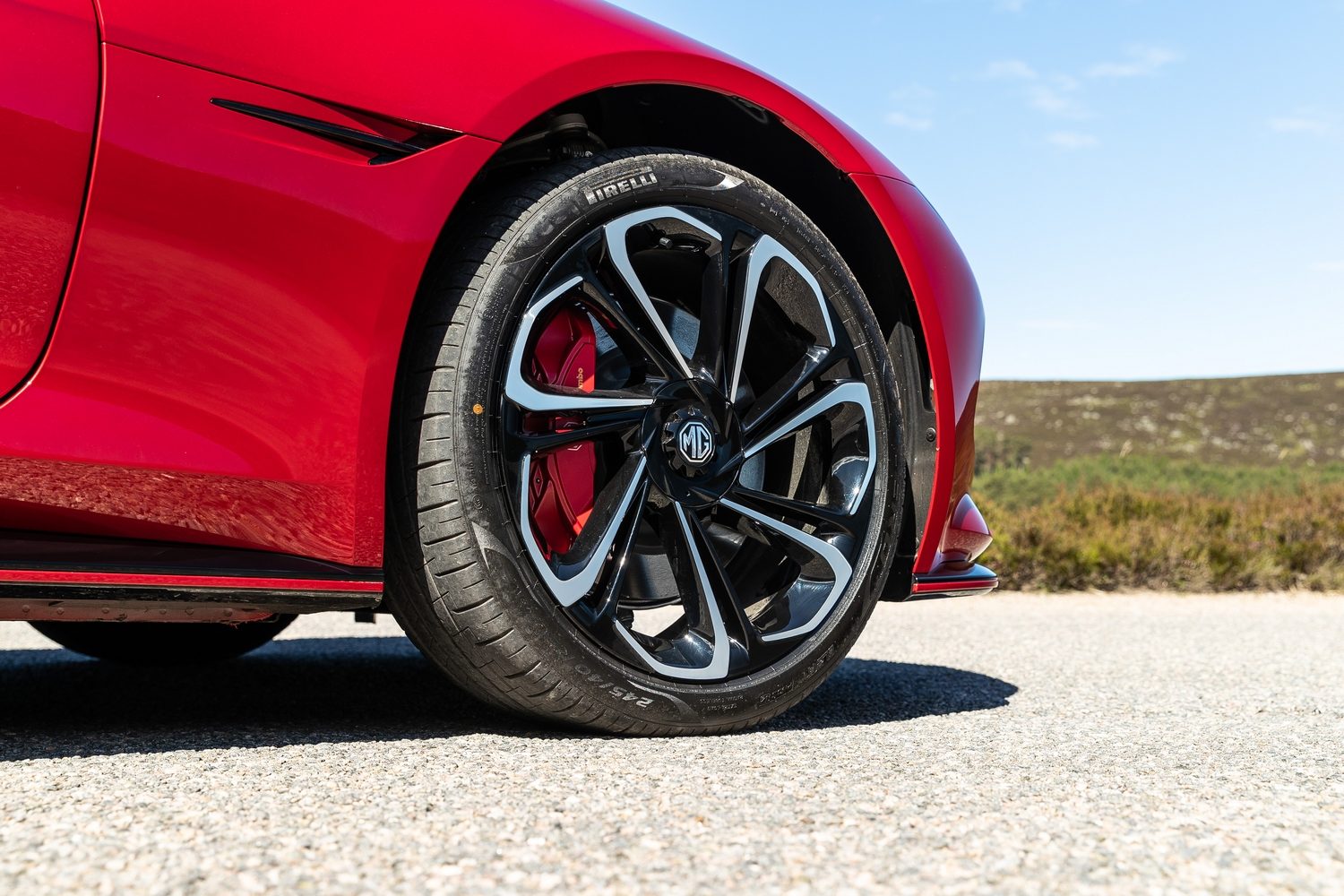
LED external lighting, an electric-folding fabric roof, auto-folding door mirrors, electric windows, front and rear parking sensors and fancy, electric-opening scissor doors are all included, as are heated and electrically adjusted sports seats, a wind deflector, dual-zone climate control, keyless entry, heated steering wheel, auto wipers and lights, the three-screen dashboard, central touchscreen, Bluetooth, navigation, USB ports, a 360-degree camera system and Apple CarPlay and Android Auto, plus adaptive cruise control.
Despite its sporty image, the Cyberster still gets the full ‘MG Pilot’ suite of safety equipment, including blind-spot detection, rear cross traffic alert, lane change assist, active emergency braking with pedestrian and bicycle detection, lane keep assist and much more.
The MG Cyberster’s onboard technology
There are four screens in total in the cabin of the Cyberster, but MG’s designers have integrated them well, so they don’t look out of place. In fact, the three-screen dashboard layout works to make the driver feel cocooned within the car with all the information they might want - and plenty they’ll never need - just a glance away. Right behind the wheel is a 10.25-inch display for the main instruments, and that’s flanked by two 7.0-inch screens.
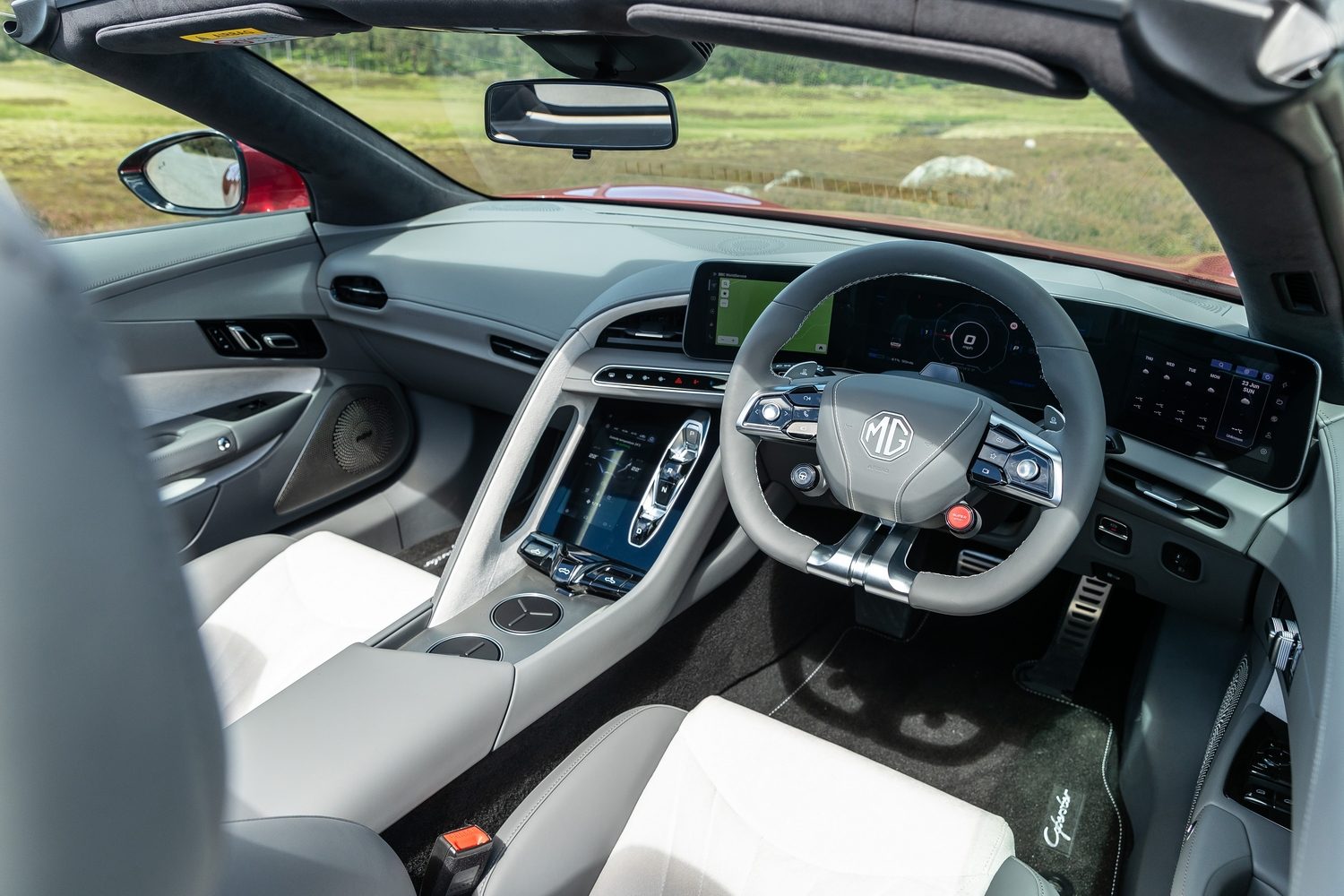
The appearance of these can be varied by the driver, and also change depending on the selected driving mode. It can all look a little video-game-like at times, which will appeal to some people, but not to others. For the record, we like it.
If you give the interior of the Cyberster a fleeting glance you may miss the fact there’s also a touchscreen on the centre console. This is angled towards the driver and is more for the climate control than anything else, so it neatly blends into its surroundings.
The reasons you’d buy an MG Cyberster
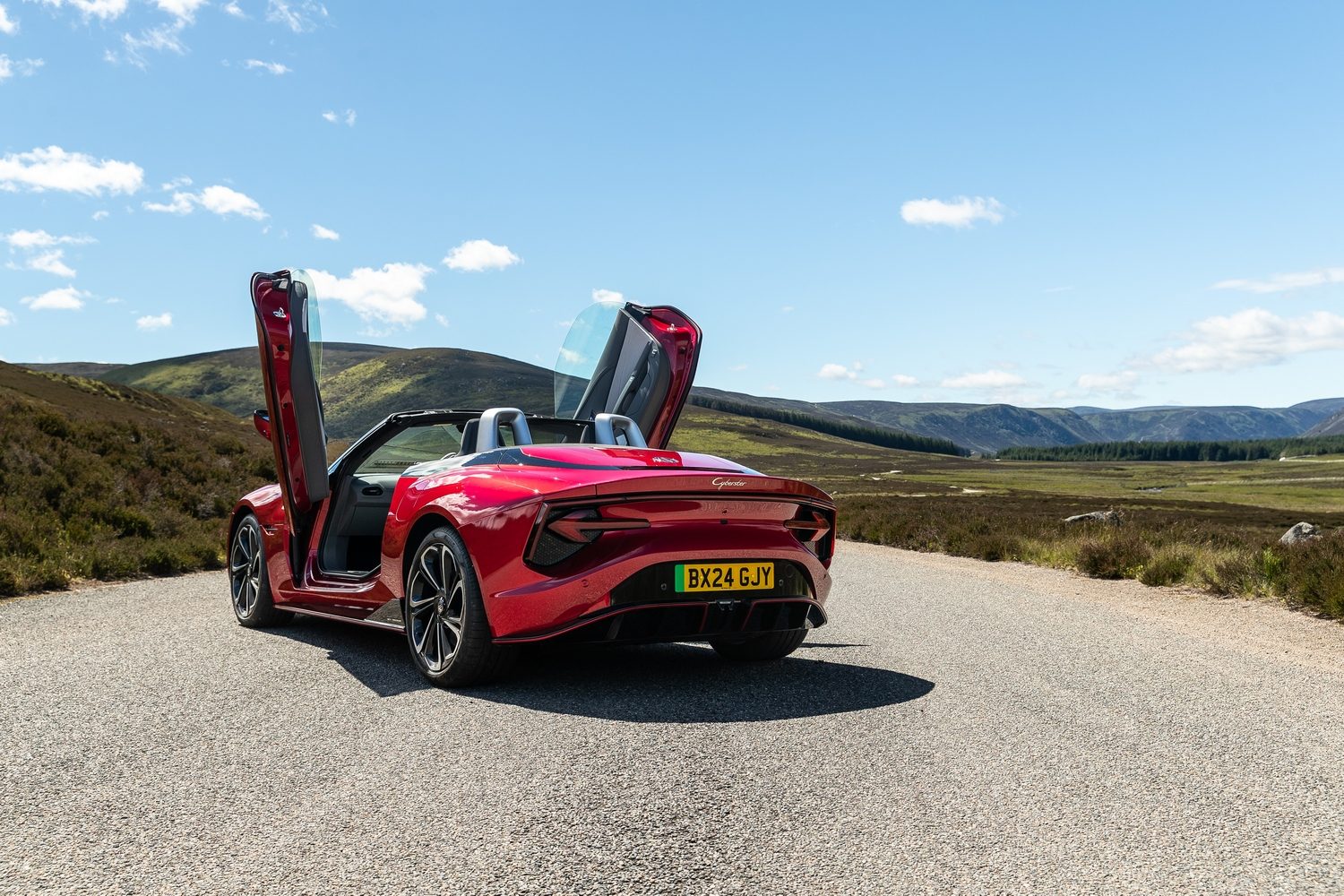
An electric powertrain isn’t the sole reason you might consider buying the MG Cyberster. There isn’t a great deal of choice in the new market for convertible sports cars, irrespective of whether they’re electric or combustion engined. The Cyberster’s looks aren’t overly polarising and the interior is more spacious than some other offerings. Its battery capacity is at the upper end of what is typically available in any electric car currently and, so long as you’re not driving it especially hard, the range should be sufficient for most people’s typical use. It’s quite different from anything else that MG currently offers, too.
Ask us anything about the MG Cyberster
If there’s anything about the MG Cyberster we’ve not covered, or you’d like advice in choosing between it and other vehicles, you can avail of our (completely free) expert advice service via the Ask Us Anything page.

